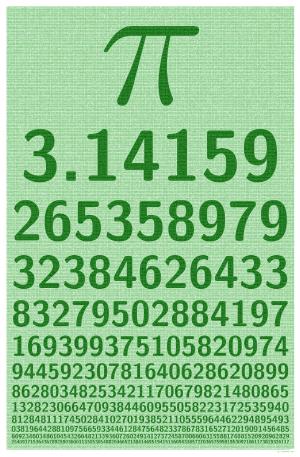Diversity is any kind of variety that makes our world a better place.
Jazz music is one of the few art forms that is genuinely American. Some of the unique characteristics that help to define Jazz include the rhythmic interaction between the performers, the freedom to improvise, and the way in which the personality of the performer expresses itself through the music and vice-versa.
Jazz is always associated first with New Orleans, Louisiana. But believe it or not, the earliest known reference to the word “jazz” came from Portland, Oregon! During this week in 1912, a sports reporter from the Los Angeles Times wrote about a pitcher from the Portland Beavers baseball team, who said, “I’ve got a new curve this year. I call it the Jazz ball because it wobbles and you simply can't do anything with it.” The name first became associated with the music three years later in Chicago, even though the music itself had been played in New Orleans prior to that.
Remember, you don’t have to travel as far as New Orleans, Louisiana or Portland, Oregon to find diversity. There are hundreds of opportunities to celebrate diversity right here at your own school. Find one today!
Monday, March 28, 2011
Saturday, March 19, 2011
Week 29: Persian New Year (Nowruz)
Diversity is any kind of variety that makes our world a better place.
This week Persians around the world are celebrating Persian New Year. Before the new year arrived, Persian families were busy cleaning out their homes. They also purchased new clothes with which to greet the start of the new year. During the course of the 12 day-long celebration, Persians will visit family members, especially their family elders.
Incidentally, it is important to understand that Persians and Arabs are not the same. Though they are both associated with the religion of Islam, they are ethnically different. Persians live primarily in Iran and Afghanistan and are of an Indo-European background. Arabs primarily live in the region stretching from North Africa to Iraq, and are identified as Semitic.
In short, Persians have their own unique culture, history, and language, and Arabs have theirs as well. Like all people, they are proud of their respective heritages, so if you ever get confused between the two, just ask them—you’ll probably find that they’re happy to explain.
Remember, you don’t have to travel as far as Iran or Afghanistan to find diversity. There are hundreds of opportunities to celebrate diversity right here at your own school. Find one today!
This week Persians around the world are celebrating Persian New Year. Before the new year arrived, Persian families were busy cleaning out their homes. They also purchased new clothes with which to greet the start of the new year. During the course of the 12 day-long celebration, Persians will visit family members, especially their family elders.
Incidentally, it is important to understand that Persians and Arabs are not the same. Though they are both associated with the religion of Islam, they are ethnically different. Persians live primarily in Iran and Afghanistan and are of an Indo-European background. Arabs primarily live in the region stretching from North Africa to Iraq, and are identified as Semitic.
In short, Persians have their own unique culture, history, and language, and Arabs have theirs as well. Like all people, they are proud of their respective heritages, so if you ever get confused between the two, just ask them—you’ll probably find that they’re happy to explain.
Remember, you don’t have to travel as far as Iran or Afghanistan to find diversity. There are hundreds of opportunities to celebrate diversity right here at your own school. Find one today!
Saturday, March 12, 2011
Week 28: Pi
Diversity is any kind of variety that makes our world a better place.
Did you know that March 14 is a holiday called “Pi Day”? No, we’re not celebrating the kind of pies that your grandma makes. We’re celebrating the kind of pi’s you find in your math class. In numerical form, March 14 is “Three Fourteen.” And 3.14 are the first digits in that amazing number called “Pi” that goes on and on forever.
The first evidence of mankind’s understanding of Pi comes from studying the design of the great pyramids of Ancient Egypt. Pi represents the relationship between a circle’s diameter and its circumference. In other words, no matter how small or large a circle is, its circumference is always 3.14 times as long as its diameter. Pi, therefore, is a constant, or a number that never changes.
Like circles, people come in many shapes and sizes, and we have various talents and abilities. And like Pi, we too share certain constants. We all need to be loved and respected. We all want to succeed.
Remember, you don’t have to travel as far as the pyramids of Egypt to find diversity. There are hundreds of opportunities to celebrate diversity right here at your own school. Find one today!
Did you know that March 14 is a holiday called “Pi Day”? No, we’re not celebrating the kind of pies that your grandma makes. We’re celebrating the kind of pi’s you find in your math class. In numerical form, March 14 is “Three Fourteen.” And 3.14 are the first digits in that amazing number called “Pi” that goes on and on forever.
The first evidence of mankind’s understanding of Pi comes from studying the design of the great pyramids of Ancient Egypt. Pi represents the relationship between a circle’s diameter and its circumference. In other words, no matter how small or large a circle is, its circumference is always 3.14 times as long as its diameter. Pi, therefore, is a constant, or a number that never changes.
Like circles, people come in many shapes and sizes, and we have various talents and abilities. And like Pi, we too share certain constants. We all need to be loved and respected. We all want to succeed.
Remember, you don’t have to travel as far as the pyramids of Egypt to find diversity. There are hundreds of opportunities to celebrate diversity right here at your own school. Find one today!
Sunday, March 6, 2011
Week 27: the World Wide Web
Diversity is any kind of variety that makes our world a better place. This week, we are celebrating the birthdate of the Internet and more importantly the reason it was born. The key feature of the Internet is being able to click on a link to access information or documents across a network. This system, now called the World Wide Web (or “www” for short) was first proposed this week in 1989, by a British computer scientist named Timothy Berners-Lee.
Scientists are part of a community, and Berners-Lee wanted to find a better way for scientists to share information with each other so they could assist each other in their research. In other words, the ideas of sharing and helping were the original basis of the Internet. The same values of sharing and helping also lie at the core of diversity too. Make sharing and helping a part of the way you interact with your fellow classmates.
Remember, you don’t have to travel as far as the World Wide Web to find diversity. There are hundreds of opportunities to celebrate diversity right here at your own school. Find one today!
Scientists are part of a community, and Berners-Lee wanted to find a better way for scientists to share information with each other so they could assist each other in their research. In other words, the ideas of sharing and helping were the original basis of the Internet. The same values of sharing and helping also lie at the core of diversity too. Make sharing and helping a part of the way you interact with your fellow classmates.
Remember, you don’t have to travel as far as the World Wide Web to find diversity. There are hundreds of opportunities to celebrate diversity right here at your own school. Find one today!
Subscribe to:
Comments (Atom)


